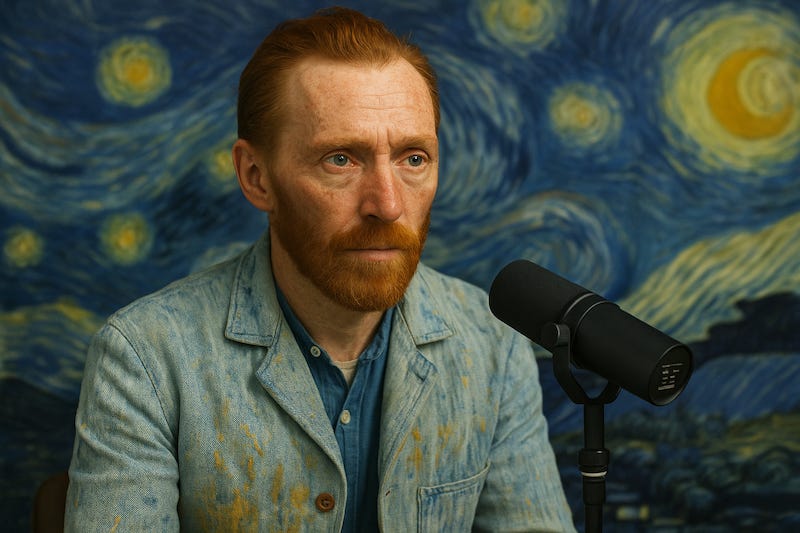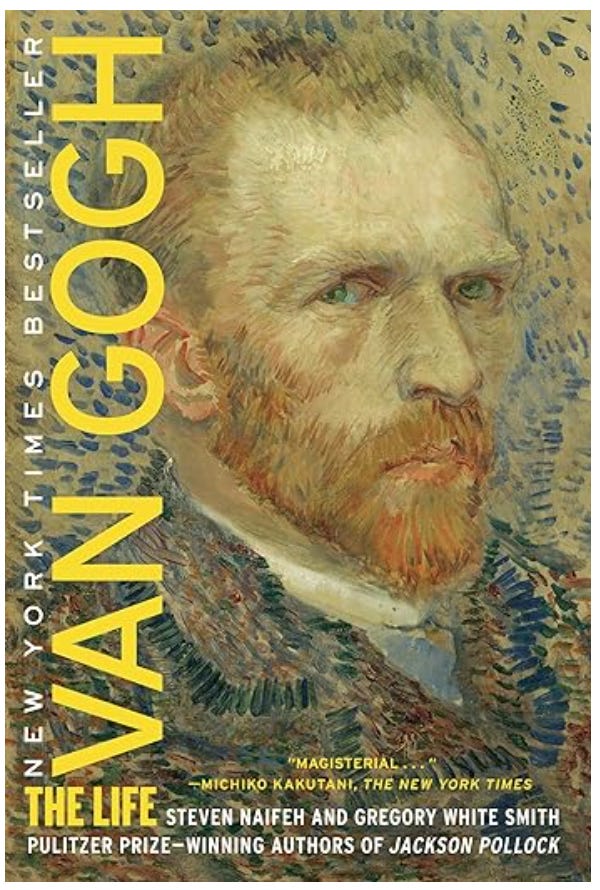Vincent van Gogh – On Color, Pain, and Why the World Looked Brighter in Paint
Recorded via ChronoTranscriptor™ – July 9, 2025
[Host Introduction]
Today on ChronoTalks, we sit with a man whose art—once mocked and ignored—now hangs in the most revered museums on Earth. Vincent van Gogh, the Dutch painter whose swirling skies and burning sunflowers redefined how we see the world.
He sold only one painting during his lifetime. He battled poverty, isolation, and mental illness. And yet he created over 2,000 works in a single decade—driven by a vision only he seemed to understand.
With the help of the ChronoTranscriptor™, we bring him into the present—soft-spoken, searching, and still covered in a fine layer of paint.
[Interview Begins]
Host: Mr. van Gogh, welcome. It’s a privilege to speak with you.
Vincent van Gogh: Thank you. It’s strange... to be wanted. In my own time, I often felt I was speaking into a void.
But I suppose color waits patiently. Like hope.
Host: Your work is now celebrated worldwide. Did you ever imagine this?
Vincent van Gogh: No. When I painted, I felt more forgotten than known. But I didn’t paint for applause. I painted because the world was unbearable unless I transformed it.
I painted what I could not say. What I could not endure. What I could not live without.
Host: Many of your letters show deep loneliness. Did art bring you comfort?
Vincent van Gogh: At times, yes. Art was my prayer, my protest, my apology.
When I painted a wheat field, I wasn’t capturing wheat. I was painting hunger. When I painted a chair, I was painting absence.
The canvas listened, even when people didn’t.
Host: What drew you to such vivid color?
Vincent van Gogh: Color is feeling, not fact.
People think the sky is blue and the sun is yellow because they’ve been told so. But I saw skies that bled green, and suns that screamed orange.
I did not want to paint the world as it was—I wanted to paint how it hurt, how it burned, how it lived.
Host: What do you remember of your time in the asylum at Saint-Rémy?
Vincent van Gogh: The nights were loud. Not with voices—but with thoughts.
I painted to survive them. The olive trees, the cypress, the stars. Especially the stars. When I looked up, I felt less broken. Even madness can be made beautiful, if you hold the brush steady.
Host: There’s much speculation about your mental health. Do you think you were mad?
Vincent van Gogh: Perhaps. But madness is not the absence of truth. It’s the presence of too much.
I felt everything. The sorrow of a neighbor. The joy of a flower. The loneliness of a room.
It was exhausting—but also... holy.
Host: Do you remember the letter you wrote to your brother Theo near the end?
Vincent van Gogh: I remember every letter. Theo was the only soul who saw me before the world did.
To him I sent my despair wrapped in oil and canvas. Without him, there would have been no me. Not the painter. Not the human.
He kept my light from going out.
Host: If you could speak to a struggling artist today, what would you tell them?
Vincent van Gogh: That failure is not the enemy—forgetting why you began is.
Paint what is unbearable. Write what bruises you. Make beauty from your ruins. And when no one listens, keep going.
The world may not understand today. But tomorrow has long memory.
[Closing Remarks]
Host: Vincent, thank you—for your vision, your vulnerability, and your vanishing stars.
Vincent van Gogh: You are welcome. Just promise me this: if you see a sky that stirs something inside you... don’t look away.
Subscribe to ChronoTalks and keep listening across time.
Steven Naifeh and Gregory White Smith, the Pulitzer Prize–winning biographers of Jackson Pollock, deliver another masterful work with this richly detailed and deeply engaging portrait of Vincent van Gogh. With full cooperation from the Van Gogh Museum in Amsterdam, the authors draw on a trove of previously untapped materials to reexamine the life behind the legend—revealing Van Gogh’s early struggles to find his purpose, his profound bond with his brother Theo, and his transformative years in Provence, where he created some of the most beloved works in Western art.
Naifeh and Smith also delve into the lesser-known corners of Van Gogh’s psyche: his turbulent romantic entanglements, his battles with mental illness, and the murky circumstances surrounding his death at just thirty-seven.
While many books have been written about Van Gogh, no serious, comprehensive biography has been attempted in over seventy years. With striking psychological insight and narrative vitality, Naifeh and Smith breathe new life into Van Gogh’s story—offering a bold, compassionate portrait of an artist whose genius continues to resonate across generations. More information…




